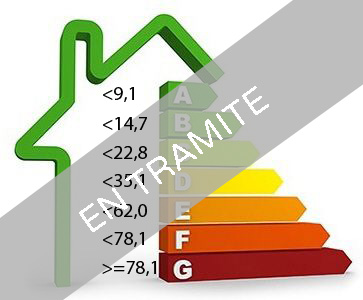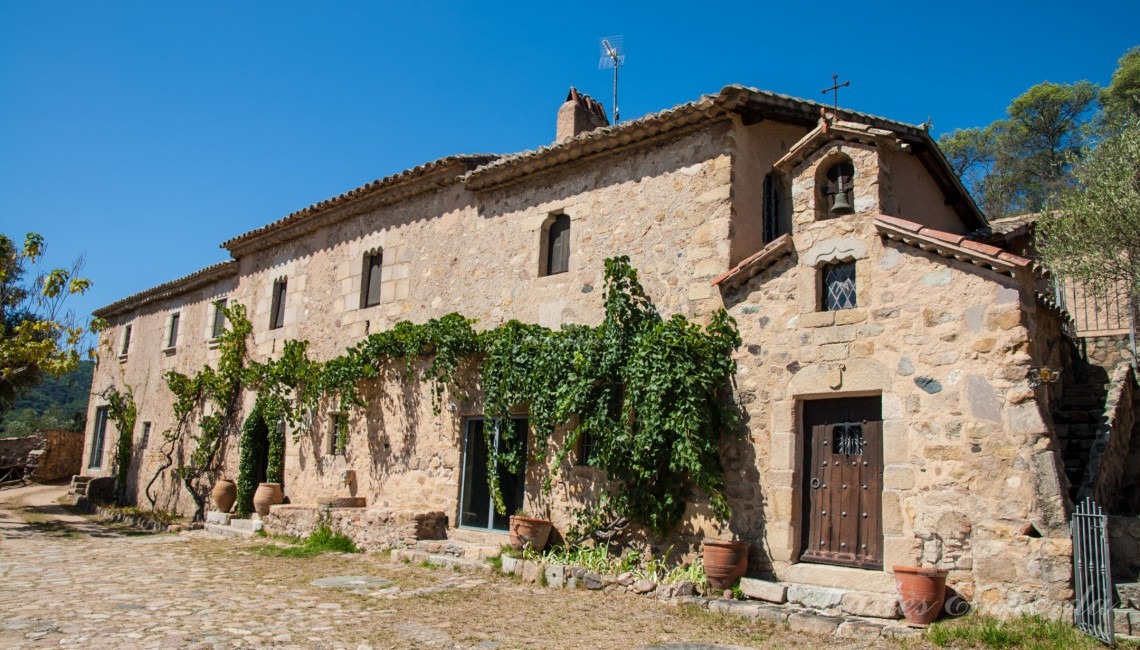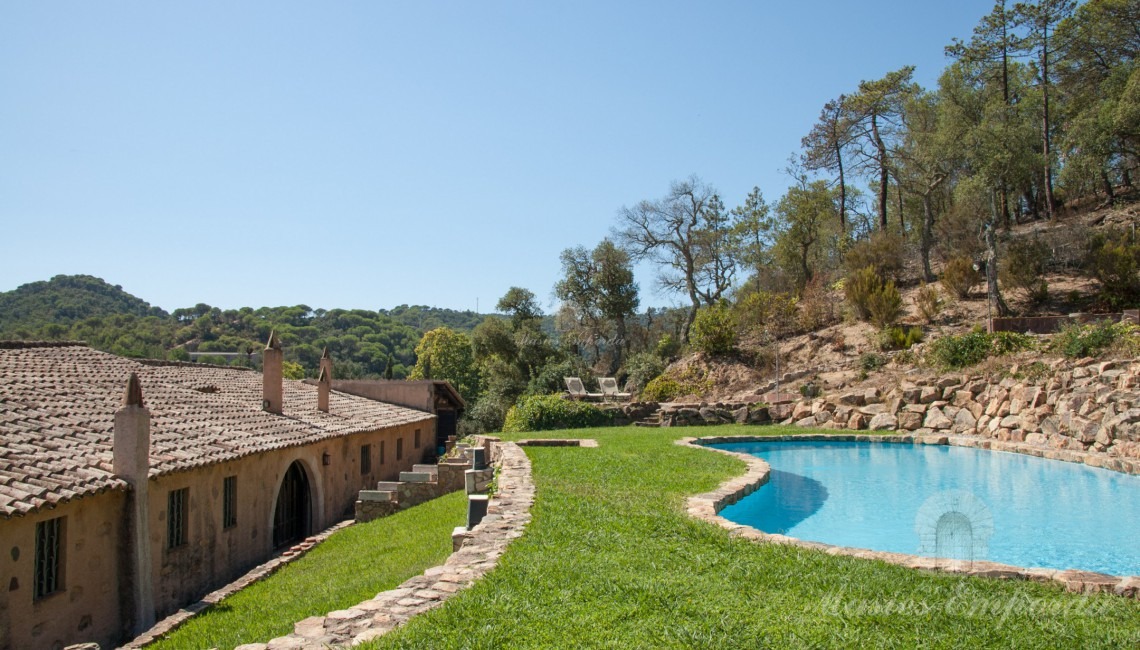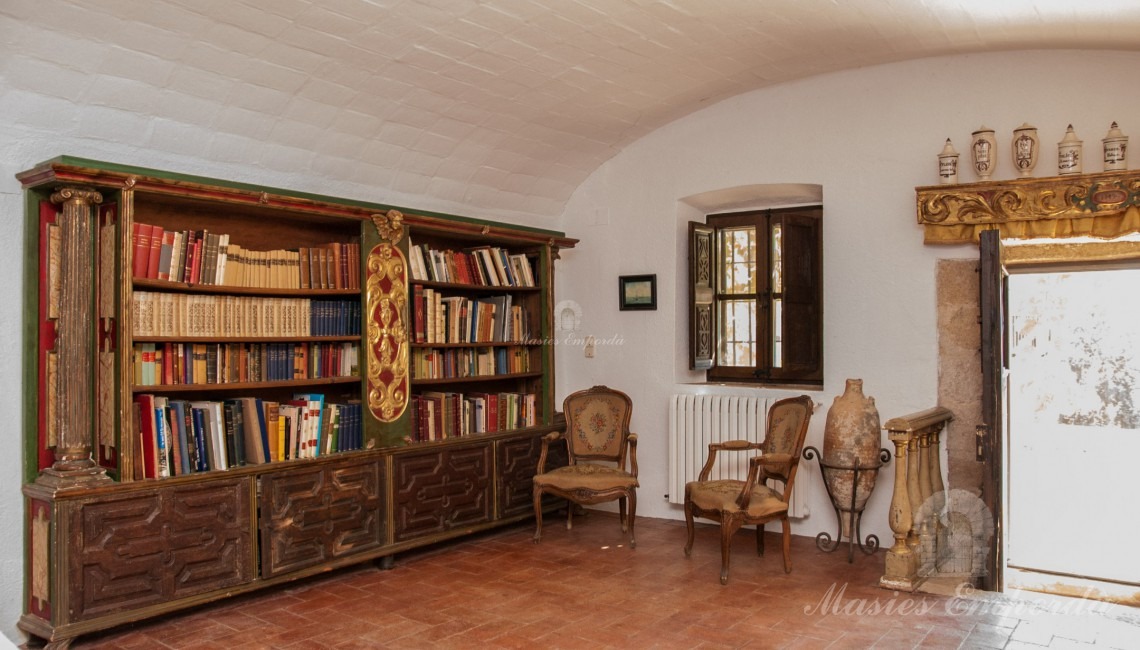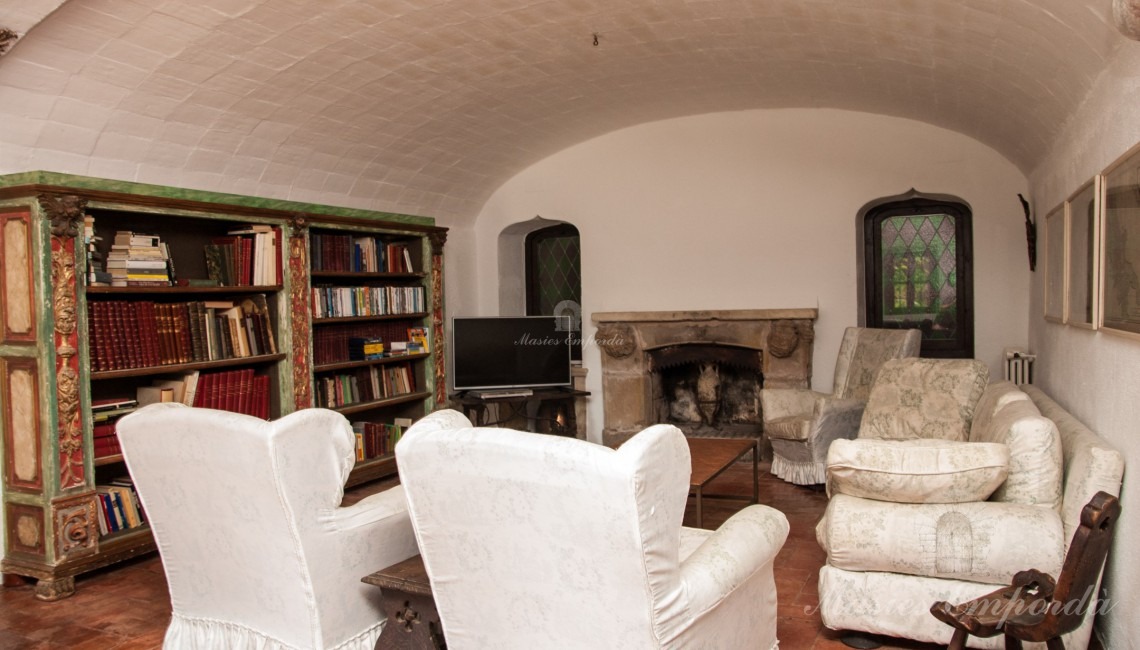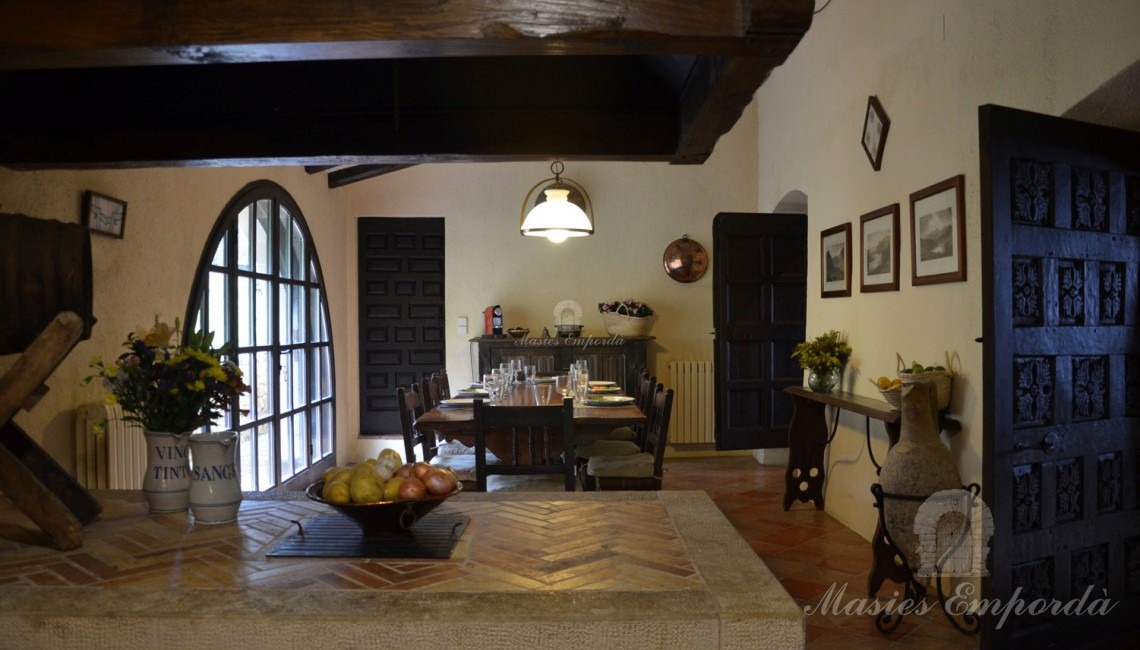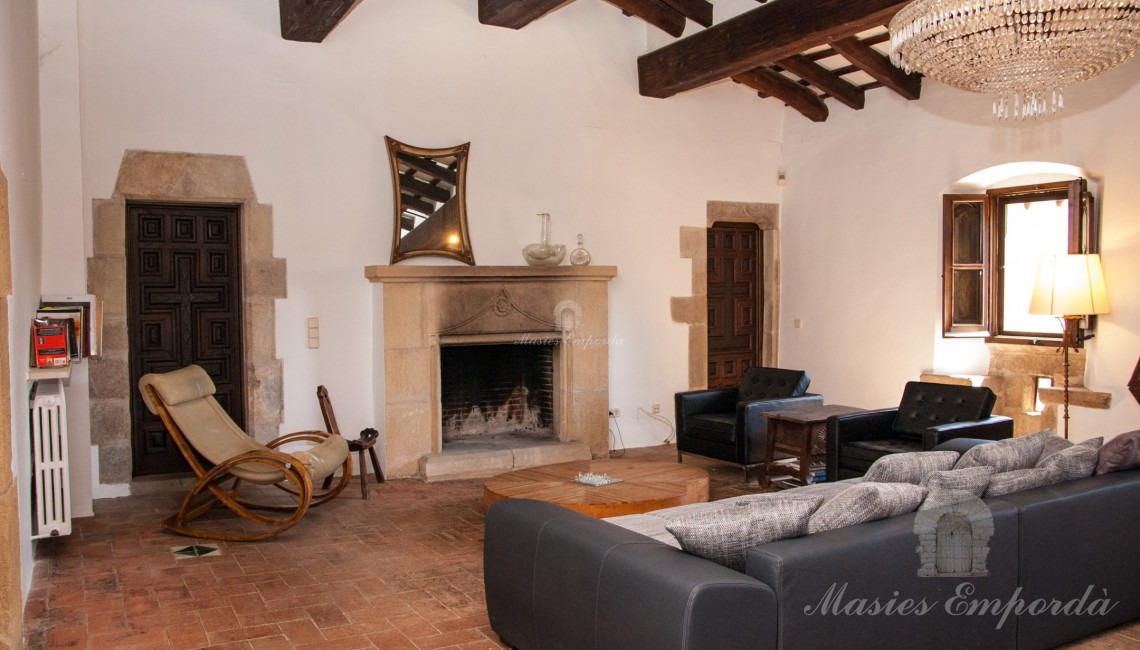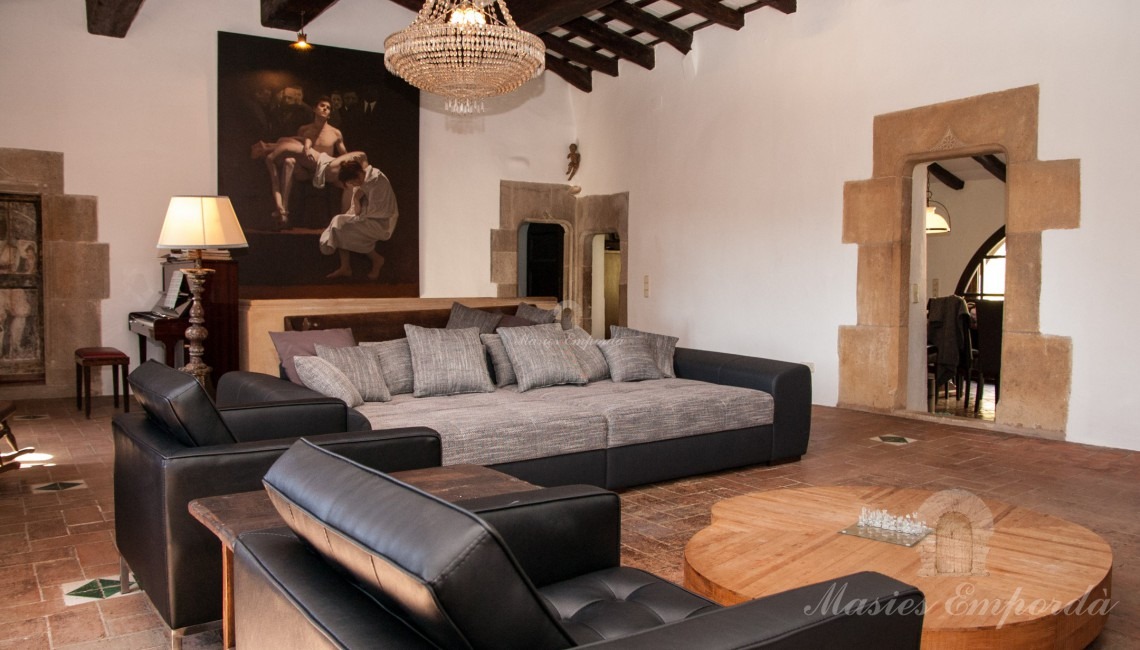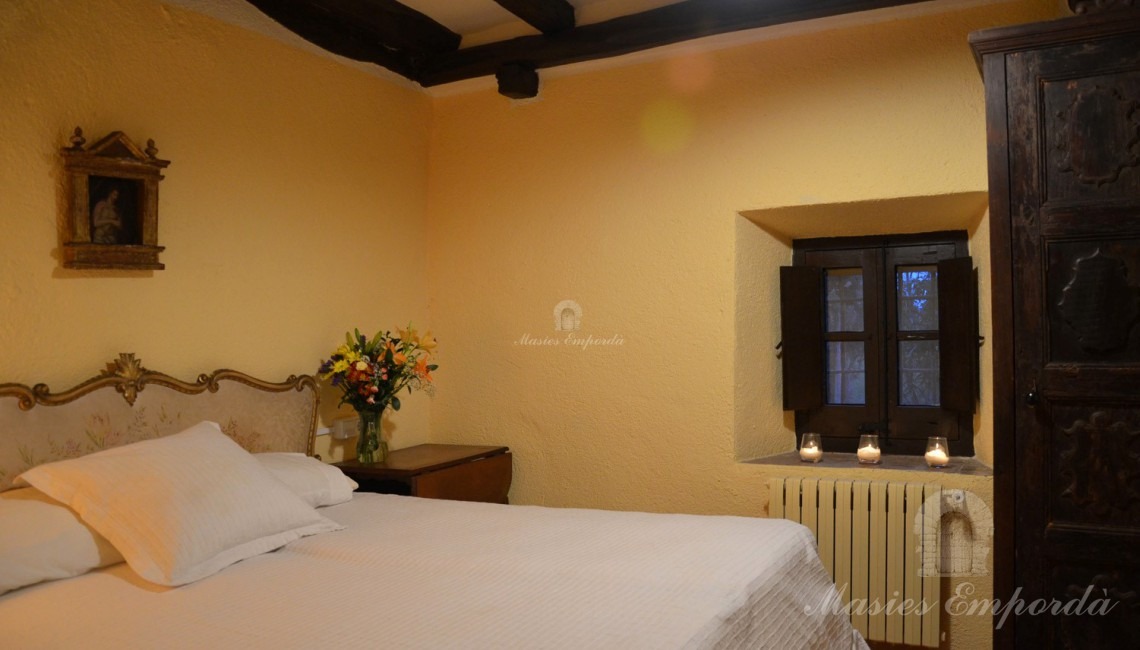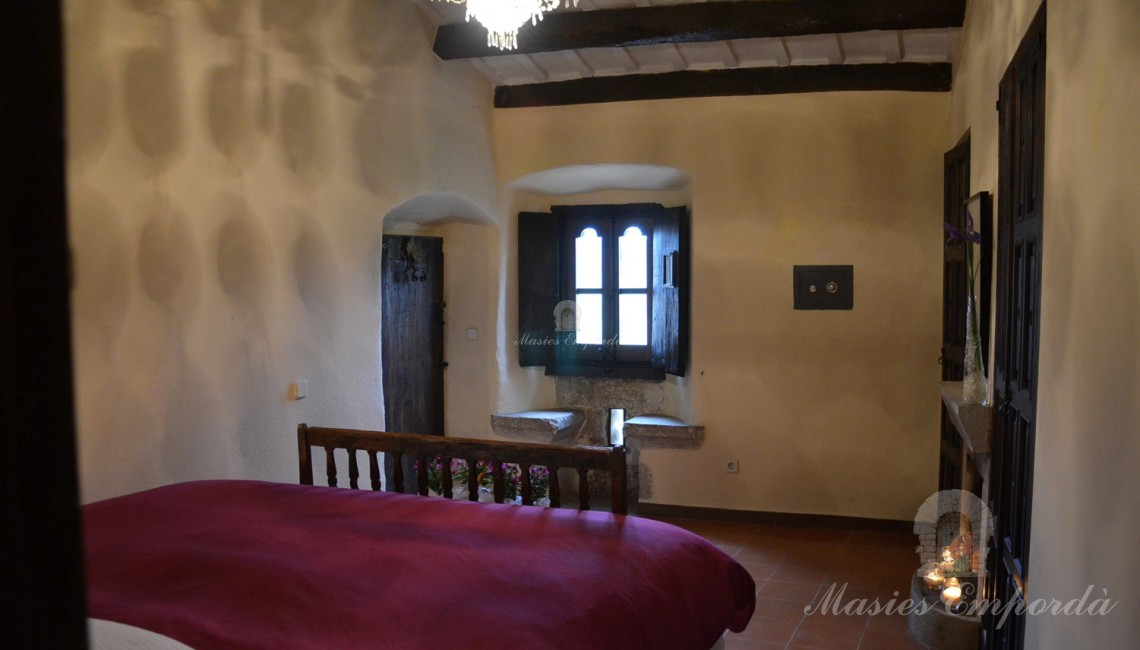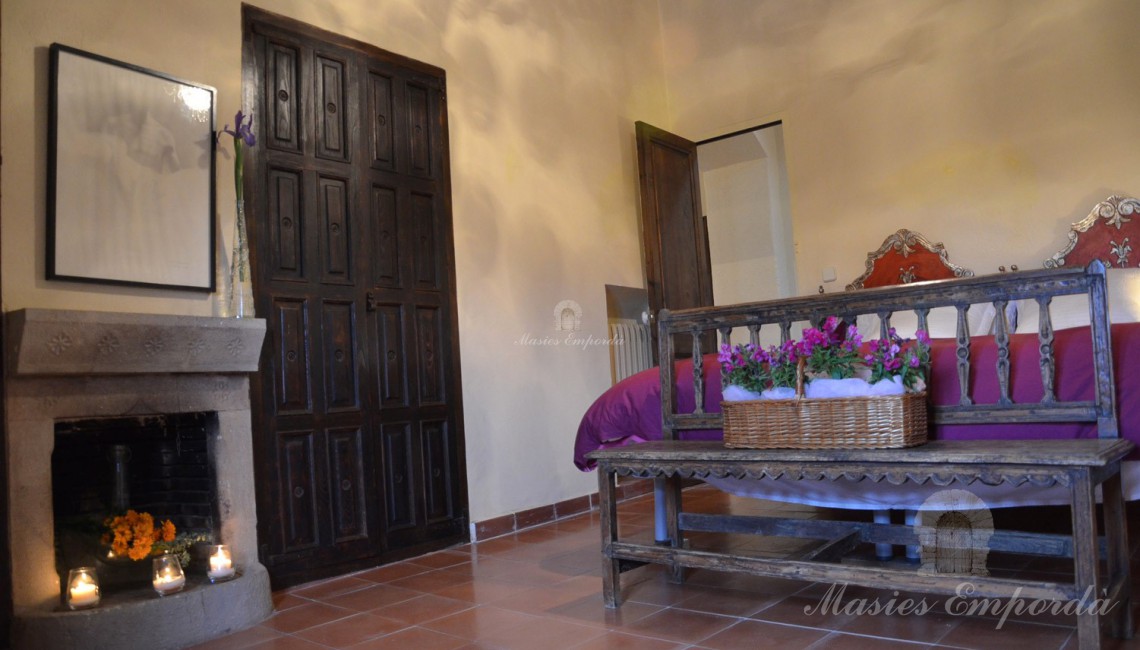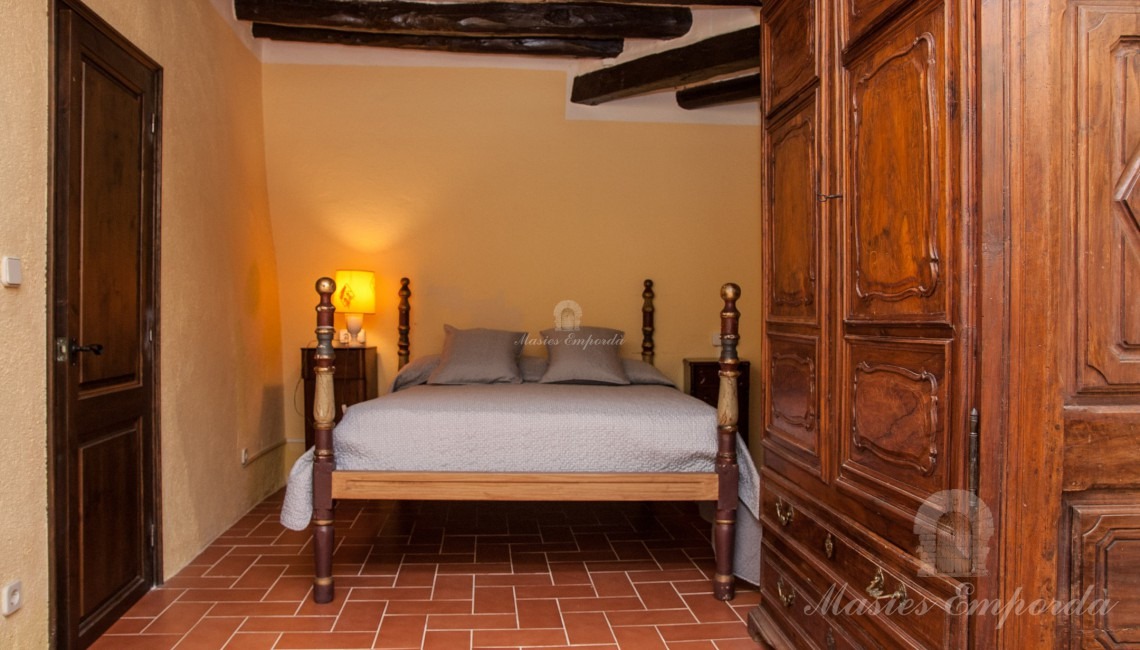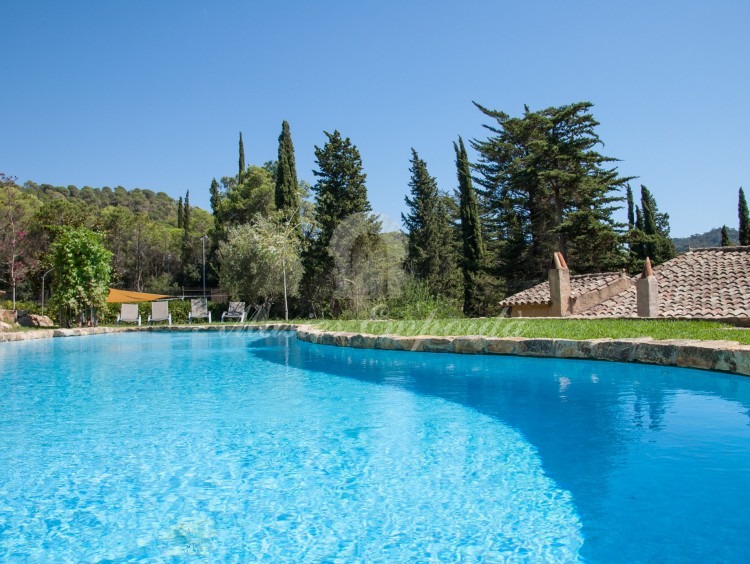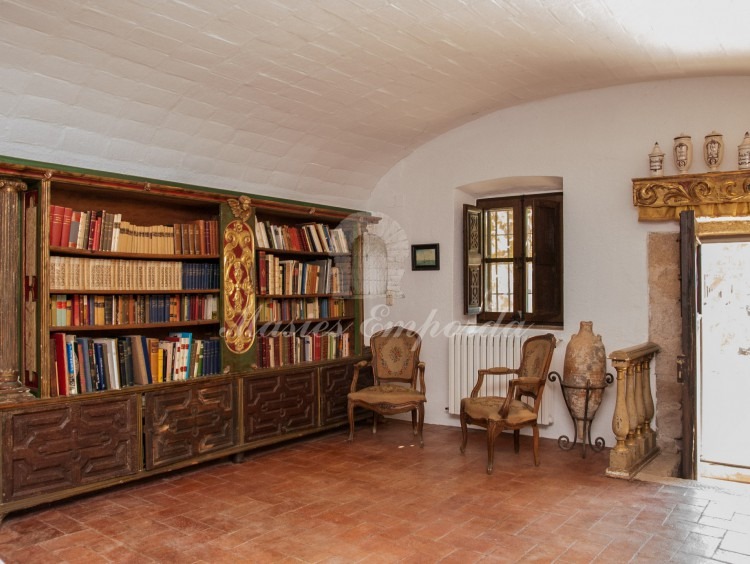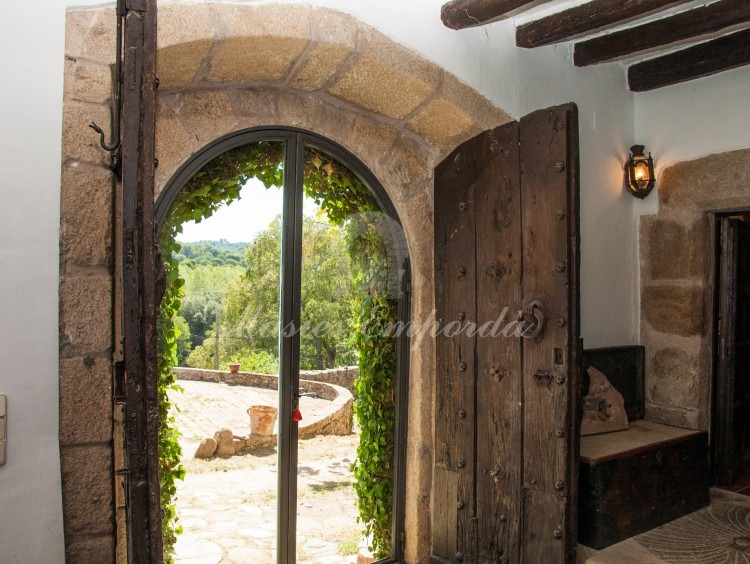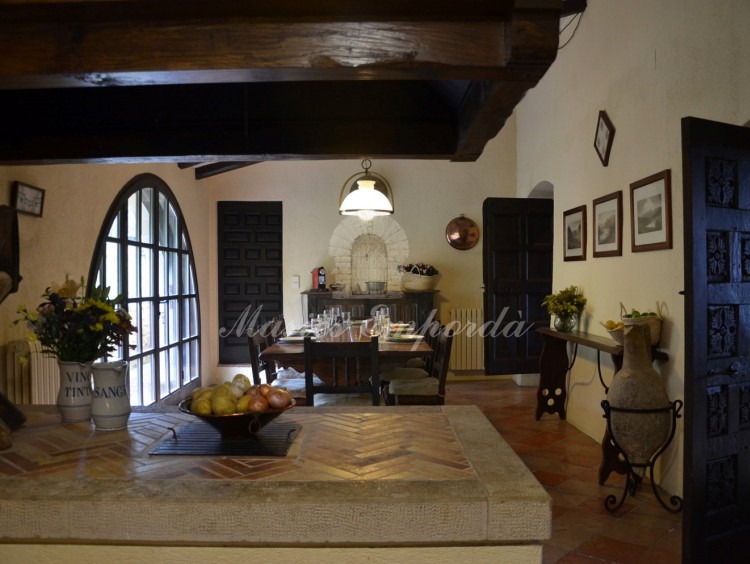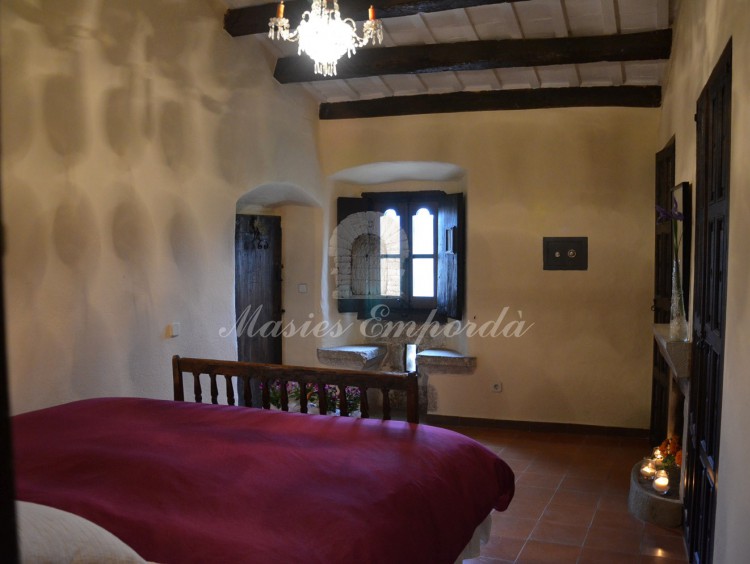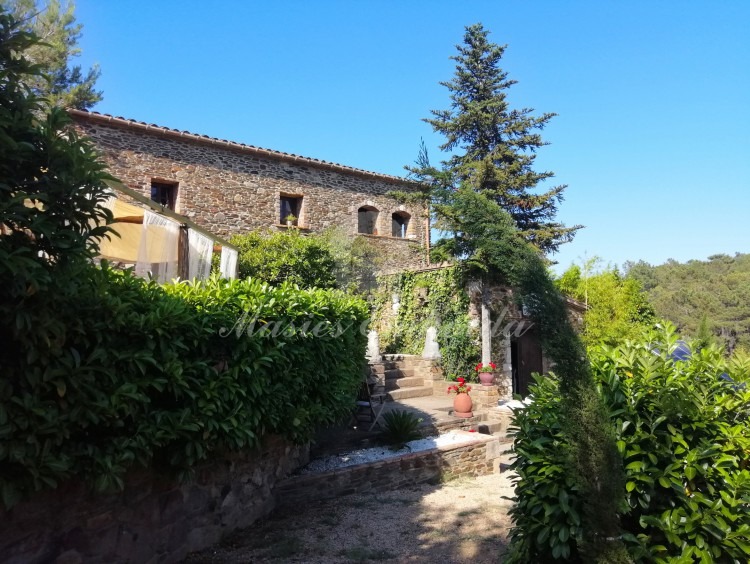Masia for sale dated in the 1700, with 1,114 m2 and 60,000 m2 of plot. Region of La Selva. Tosa de Mar. Gerona. Spain.
Description
Masia for sale dating from the 1700, with 1,114 m2 built and 60,000 m2 plot. Located in La Selva in the municipality of Tosa de Mar. Gerona. Spain.
It is a property that has several independent buildings next to the main farmhouse. It has five buildings, plus a small hermitage attached to the main house of 20m2.
1.- Main house with about 772 m2 built:
It is distributed on two floors.
Ground floor: hall, library, three living rooms, three dining kitchens, pantry, laundry,
First floor: seven bedrooms, dressing room, six bathrooms, the hermitage, porches and terraces.
2.- House of 174 m2 built:
It is distributed on two floors.
Ground floor: living room, dining room, kitchen,
First floor: Three bedrooms, a storage room, a bathroom, a toilet, laundry room and porch.
3.- House of 70m2 built:
Ground floor, living room and dining room, kitchen, two bedrooms, a bathroom and porch.
4.- House. With 76 m2
The house is distributed on two floors.
Low plan: diaphanous space of 38 m2
Ground floor. Diaphanous space of 38 m2, Ideal study.
5.- House. With 38 m2
The house is distributed on one floor.
Ground floor: a single open space, with pool facilities.
5 km from Llagostera.
15 km from the international airport and the train station. Ave. Gerona.
1 km from the beaches of Tossa de Mar, Lloret, Canyelles.
20 km from the beaches of San Feliu de Guixols, S'Agaro, Playa de Aro.
10 km from the AP7 - NII highway.
90 km from the city of Barcelona.
110 km from the international airport of Barcelona.
Finca of comfortable and easy access.
The human presence in the Tossa valley has been confirmed by archaeological sites excavated in the area of the Macizo de Cadiretes, such as the paradolmen of Piedra Sobre Otra or the dolmen of García, some of which have been dated between 2,500 BC and 1800 BC.
The discoveries of the Roman villa of Almendros and, more modern, those of Mas Carbotí and Ses Encinas confirm that the place had been inhabited in Roman times. In the Roman villa of Almendros, discovered by Iganasi Melé and Farré in 1921, interesting mosaics were discovered, currently conserved in the Municipal Museum of Tossa de Mar, among many other finds. The first mention of Tossa to the average age is of 881, when in a diploma of the emperor Charlemagne in favor of the bishop Teotari appears in the Tursam form.
The year 966 reappears in a document where the executors of Count Miró I of Barcelona donate to the monastery of Ripoll the aldio of Tossa. Until then, the Tossa valley had been part of the same administrative unit as Llagostera. The same document includes "two parishes", that of Saint Vincent and that of Saint-Lions. The first one with all certainty corresponds to the current hermitage of San Benito, inland of the Tossa valley. The second disappeared already in the early medieval period and its location is unknown. The donation also refers to the mountain or rock Paula, today said hill of Pola, a place inhabited since ancient times where one was erected a watchtower of which there is still some fragment.
It seems that initially the lordship of the monastery on Tossa was not sufficiently respected by the counts: the years 1,096 and 1,097, the counts Berenguer Ramón II and Ramón Berenguer III confirmed their rights again, ratified the same 1,097 by a bull of Pope Urban II.
The Tower of Ses Horas and the entrance portal to the Old Town
In 1186 the abbot of Ripoll Ramón de Berga had the castle of Tossa erected to the place called Mont Guardí, "Montis Guardini, and dictated a series of dispositions, which constitute a true charter of population, by which he granted the inhabitants the faculty to build houses inside and outside the fortified enclosure, which explains the formation of the Old Town, and regulated the dependency relations with the monastery. Although the Tossense liberated the bad uses, it was very strict in the exercise of seigneurial rights, especially in terms of fishing, precisely the main occupation of the neighbors.
Soon the conflicts derived from the interpretation of this point began and the fishermen of the coast not dependent on the monastery of Sant Feliu de Guíxols, Palafrugell, etc. they resisted to satisfy the tithes and the lezda of the fishing carried out within the term of Tossa, but Ripoll obtained of Alfonso II in the 1.189 a privilege.
This situation lasted practically until the end of the Old Regime and the movements of resistance of the residents of Tossa that took place over the centuries culminated in a lawsuit presented in the mid-eighteenth century against the ancient rights and lordly prerogatives of the monastery of Ripoll ; in 1764 the Council of Castile confirmed the tithes of the monastery, but sheltered by the provisions on freedom of trade promulgated by Carlos III of Spain, the neighbors got in 1784 a royal charter that abolished the exaction of the tithe. The inhabitants of Tossa still promoted a new lawsuit the same 1,784 before the Audiencia de Barcelona.
On the other hand, the donation made by Santiago el Justo to his brother-in-law Ot de Montcada the Elder of the castle of Tossa in frank alodio, together with all other panda of important donations, which later formed the barony of Llagostera, motivated protests by ripollese abbots, who were the ones who actually exercised the jurisdiction. From the middle of the XIV century the monastery granted the mayoralty, to the position of dance the one of castlà and mayor of sack was united, in successive families: first the Soler, Bernat and his son Arnau, and in 1.371 passed to Riera for sale; then he went through marriage to Vern 1.659 and soon, also by marriage, the Falguera.
The location of the population, away from the main communication routes, perhaps explains that Tossa did not participate prominently in the wars that occurred in Catalonia. He had suffered an attack by the French fleet of Philip III the Bold in 1285, in the crusade against Catalonia, and like many other coastal towns he suffered the attacks of the Berber and Turkish pirates, which have been partly reflected in the toponymy, Cala Morisca, torrent of the Moors. The fortified city served as a refuge not only for the residents of Tossa but also for those outside the walls and outsiders.
From the end of the sixteenth century piracy declined and the population jumped the walls to go deeper into the plan. In the 18th century the new extramural parish church was built.
In the 18th century, the castle had two batteries and four cannons for the defense of the coast, but at the beginning of the 19th century the main tower of the castle was turned into a mill. Currently, in its location is the Tossa lighthouse. In 1931, the enclosure of Villa Vieja was declared a national monument and its restoration began.
Equipment
Location
